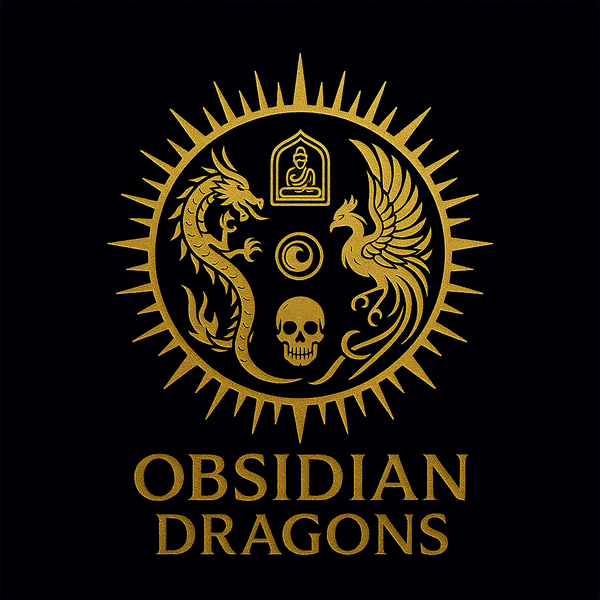hongqiao
Pendant, Tibetan Buddhist amulet, Buddha. Samantabhadra. Cinnabar. heart sutra in nanoscript. Buddhist protection. With cord
Pendant, Tibetan Buddhist amulet, Buddha. Samantabhadra. Cinnabar. heart sutra in nanoscript. Buddhist protection. With cord
Couldn't load pickup availability
Pendant, Tibetan Buddhist amulet, Buddha.
Bodhisattva Samantabhadra (description below)
Cinnabar.
As a gemologist graduated from the National Institute of Gemmology in Paris,
all our stones are appraised and certified.
sutra of the heart in nanoscript visible by transparency in the light by effect
magnifying glass. Mantra turning on the back thanks to a ball bearing system of
precision developed in Germany.
Buddhist protection.
With cord embellished with red sandalwood.
Pendant dimension: 60mm high by 40mm wide by 10mm thick
Pendant weight: 54 grams
CINNABER (HGS (mercury sulphide))
From Ancient Greek Kinnaburi. Cinnabar was already known since the Neolithic for
its use as a pigment in murals and religious ceremonies.
The Chinese used cinnabar 3500 years ago as a pigment for pottery
or as ink. They would have been the first to have made vermilion, in the
beginning of our era.
Used in Chinese medicine either orally to clear the heart and
calm the mind, or locally to eliminate toxicity. Its ancient use has
also attested in China, the Shang dynasty (-1570 to -1045) made it
the use during divinations (scapulomancy) to make appear and
interpret cracks on turtle shells.
The Chinese Taoists used it as a drug of immortality, hence
mercury poisonings. The most famous is that of Emperor Qin Shi Huang
in 210 BCE. Renowned in China also as a ghost hunt,
tradition still persisting today, as well as in the Tibetan tradition.
Bodhisattva SAMANTABHADRA
Protector of people born under the sign of the dragon and the serpent Samantabhadra,
whose name in Sanskrit means universal dignity, is a bodhisattva of
Mahayana, or great vehicle. Associated with dhyana, meditation,
he forms a triad with the Buddha Siddartha Gautama and the bodhisattva
Manjushri. Dignitary of the Lotus Sutra, and according to the Avatamsaka Sutra,
Samantabhadra made the Ten Great Bodhisattva Vows 1. Pay homage and
respect to all buddhas. 2. praising the Thus Come One the Tathagata (Buddha) 3.
Make abundant offerings. 4. Repent of wrongdoings and bad karmas
. 5. Rejoicing in the merits and virtues of others. 6. Ask the Buddhas
to continue teaching. 7. ask the Buddhas to remain in the world. 8.
Follow the teachings of the Buddhas at all times. 9. welcome and enjoy
all living beings. 10. To transfer all merits and virtues for the benefit of
all beings.
Known in Chinese Buddhism as Puxian, he is associated with
action, while Manjushri is associated with transcendent wisdom or prajna.
Responding to the name of Fugen in Japan, Samantabhadra is the subject of a cult
important in the Tendai and True Word currents.
Considered the adhi-buddha (Primordial Buddha) in the Nyinqma stream of
Tibetan Buddhism, it is often represented there in Yab-Yum, or union
indivisible male female with his consort or paredra Samantabhadri. Dzongsar
Khyentse Rinpoche following the Nyingmapa Dzogchen tradition qualifies nature and
the essence of Samantabhadra, the Primordial Buddha, as the source without origin
timeless and limitless Atiyoga teachings, and honors the point of view
contradictory maintained by certain parties arguing that the teachings
Dzogchen originated from the Bonpo tradition
Or from the Chinese monk Moheyan: “Samantabhadra is not subject to limits of
time, place or physical conditions. Samantabhadra is not a being
colorful two-eyed. Samantabhadra is the unity of consciousness and emptiness,
the unity of appearances and emptiness, the nature of mind, clarity
natural with unrelenting compassion - it's been Samantabhadra from the start.“
Unlike his more popular counterpart Mañjuśrī, Samantabhadra is only
rarely depicted alone and is usually found in a trinity on the side
right of Shakyamuni, mounted on a six-tusked white elephant. In these
traditions that accept the Avatamsaka Sutra as its fundamental instruction,
Samantabhadra and Manjusri flank the Vairocana Buddha, the central Buddha of
this particular Sutra.
He is sometimes shown in Chinese art with feminine features,
riding an elephant with six pairs of tusks while carrying a ``
parasol ''of lotus leaf (Sanskrit: chatra), wearing a robe and
features similar to some female depictions of Guanyin.
It is in this form that Samantabhadra is worshiped as the bodhisattva
protector of the monasteries associated with Mount Emei in western China in the
Sichuan province, an important place of Buddhist pilgrimage. Some think
that Samantabhadra's white elephant mount was the same elephant that is
appeared to Queen Maya, the Buddha's mother, to announce his birth. THE
Mahayana esoteric traditions treat Samantabhada as one of the Buddhas
"Primordials" (Sanskrit: Dharmakaya), but the main primordial Buddha is
considered Vairocana.
The people of Sri Lanka revere Samantabhadra Bodhisattva as Saman (also
called Sumana, Samantha, Sumana Saman). The name Saman means "the rising sun
morning". The god Saman is considered one of the guardian deities of
the island as well as a protector of Buddhism. Its main shrine is
located in Ratnapura, where an annual festival is held in his honor.
Share
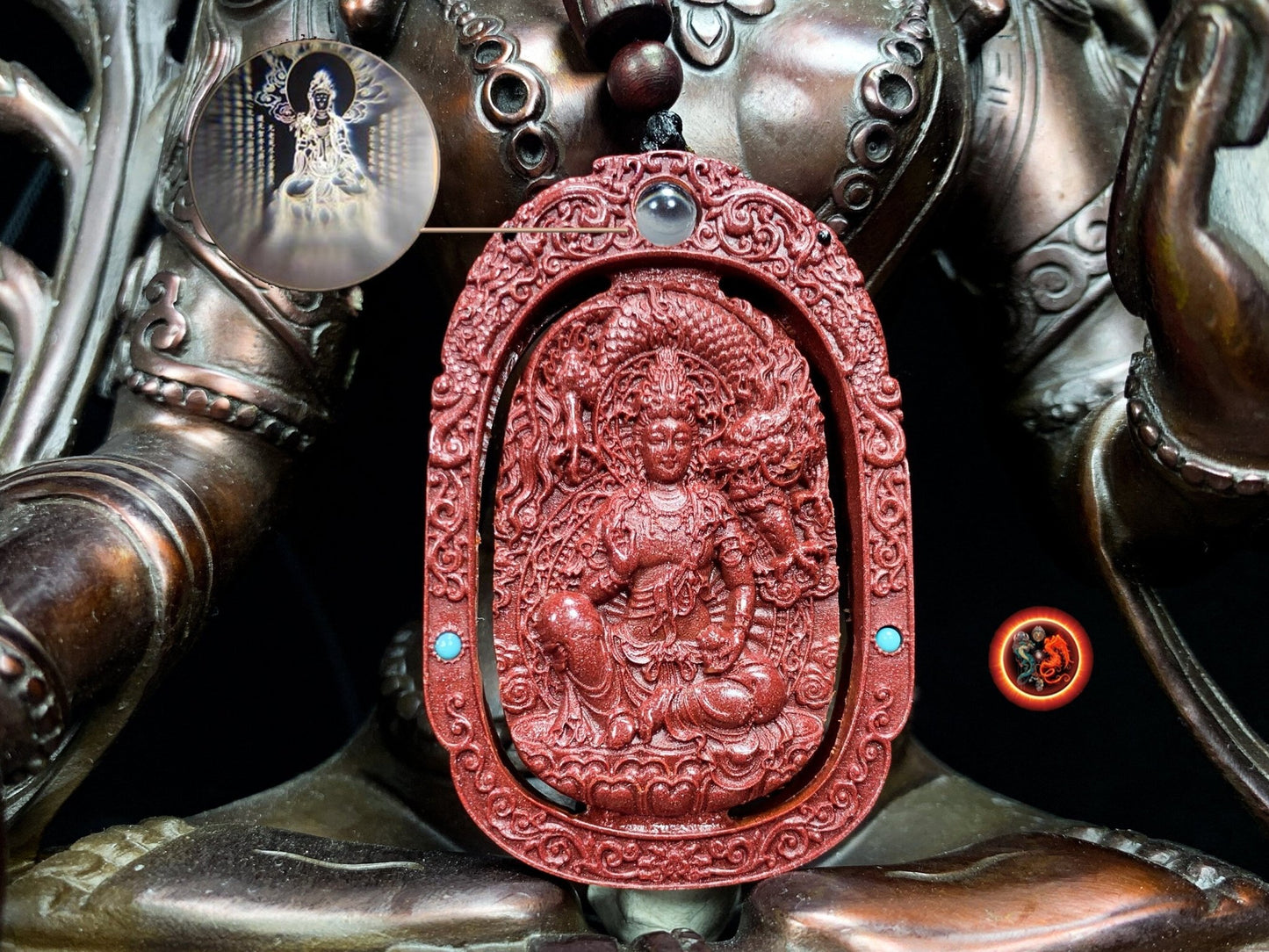
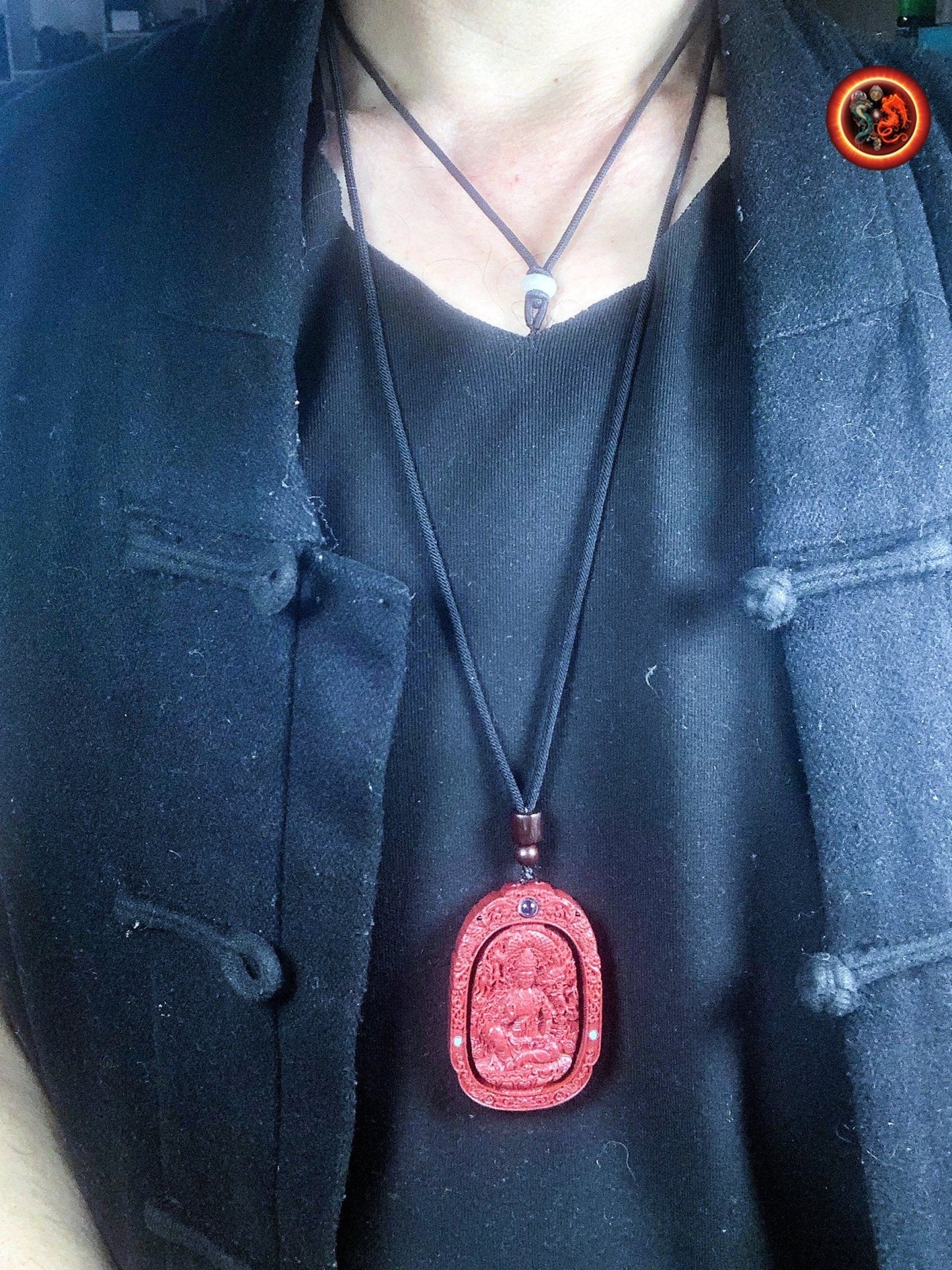
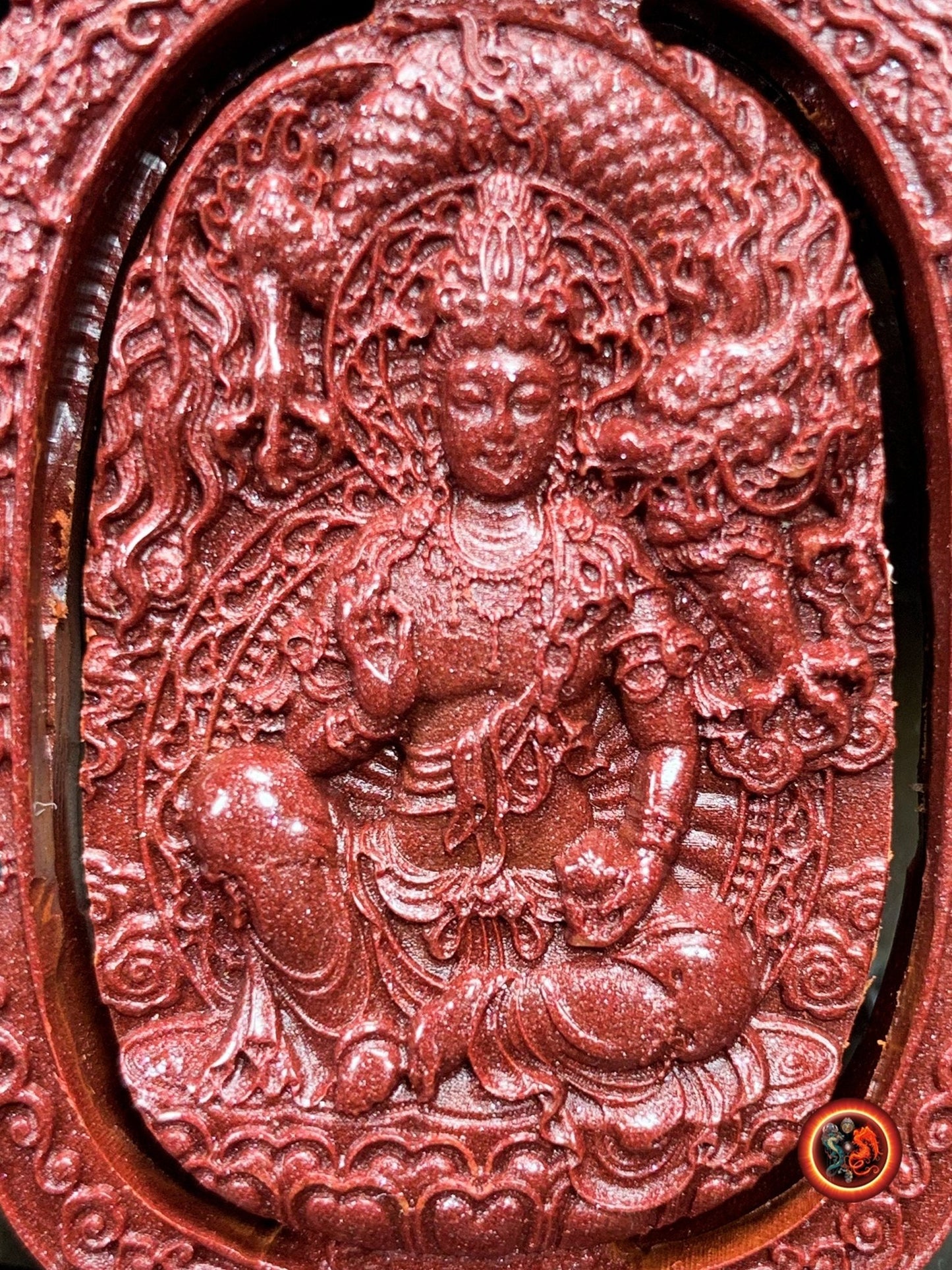
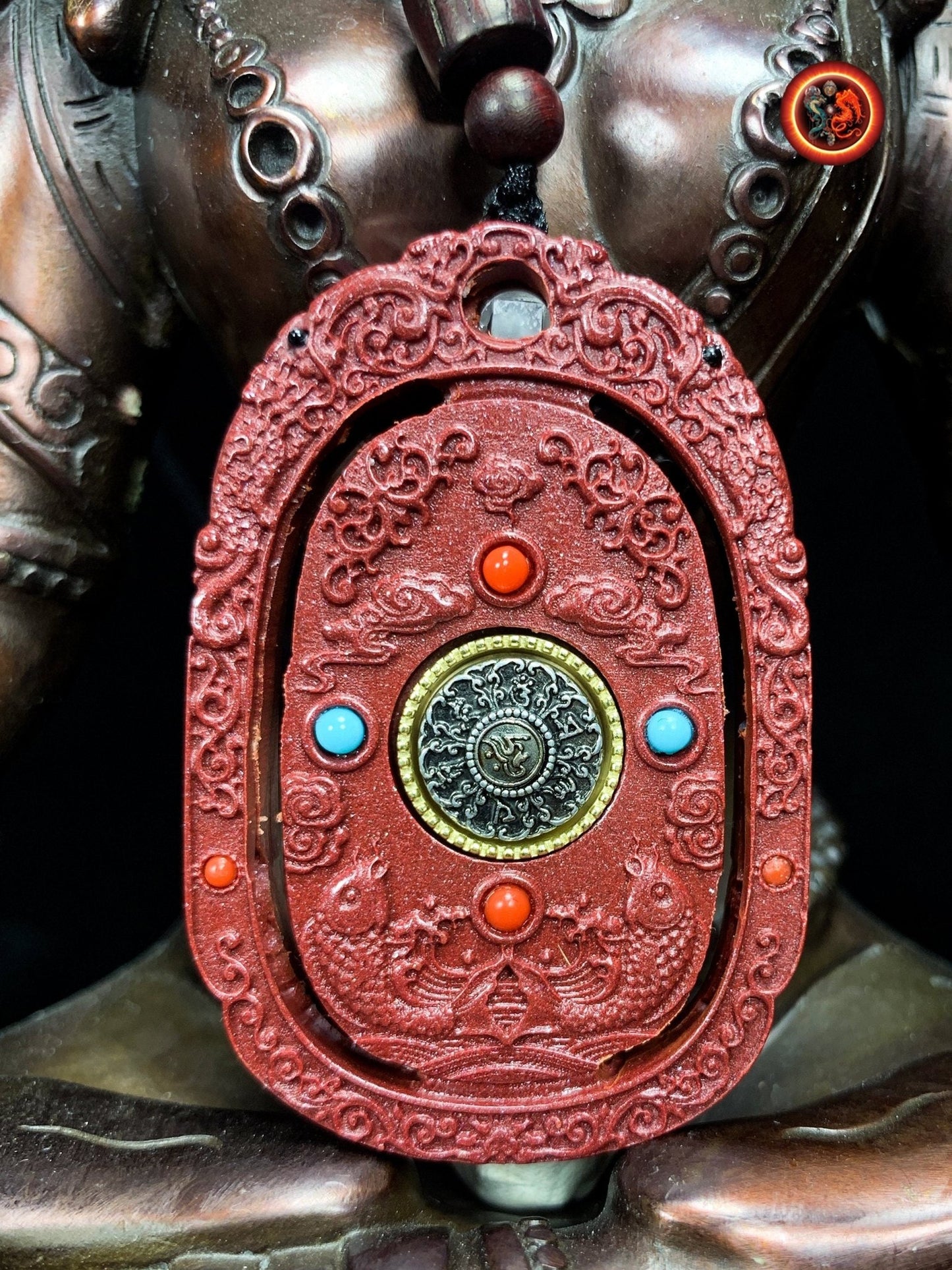
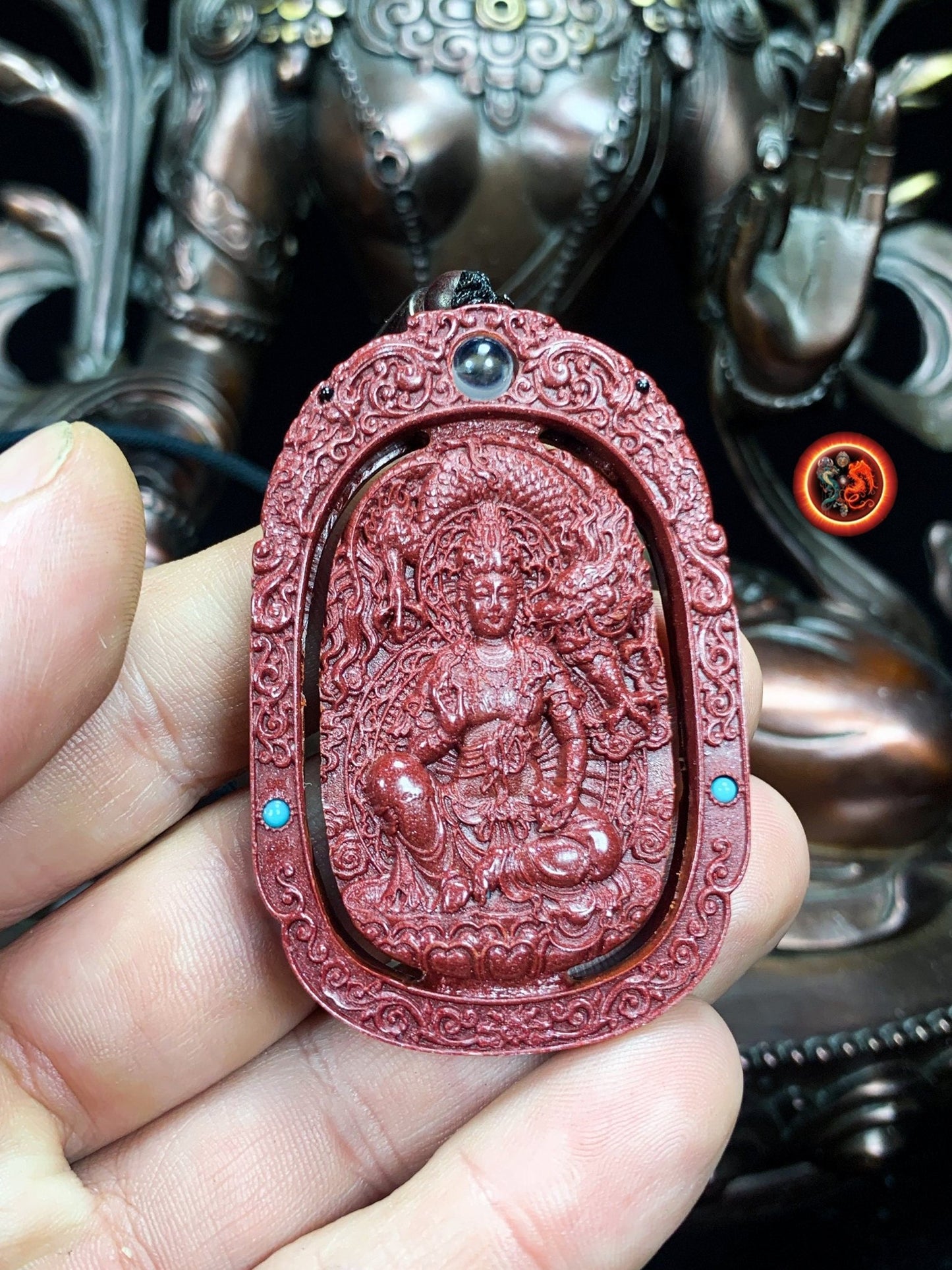
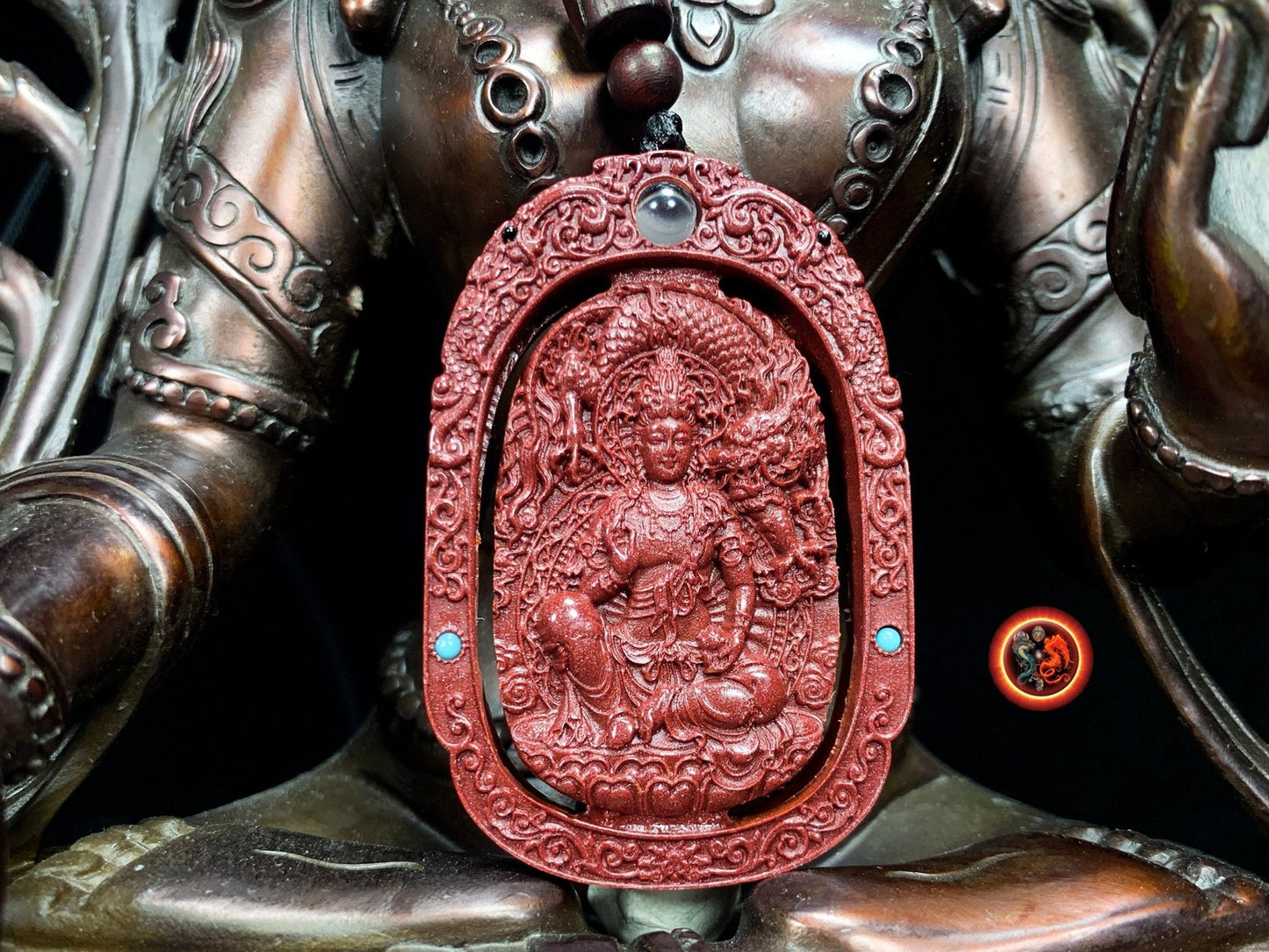
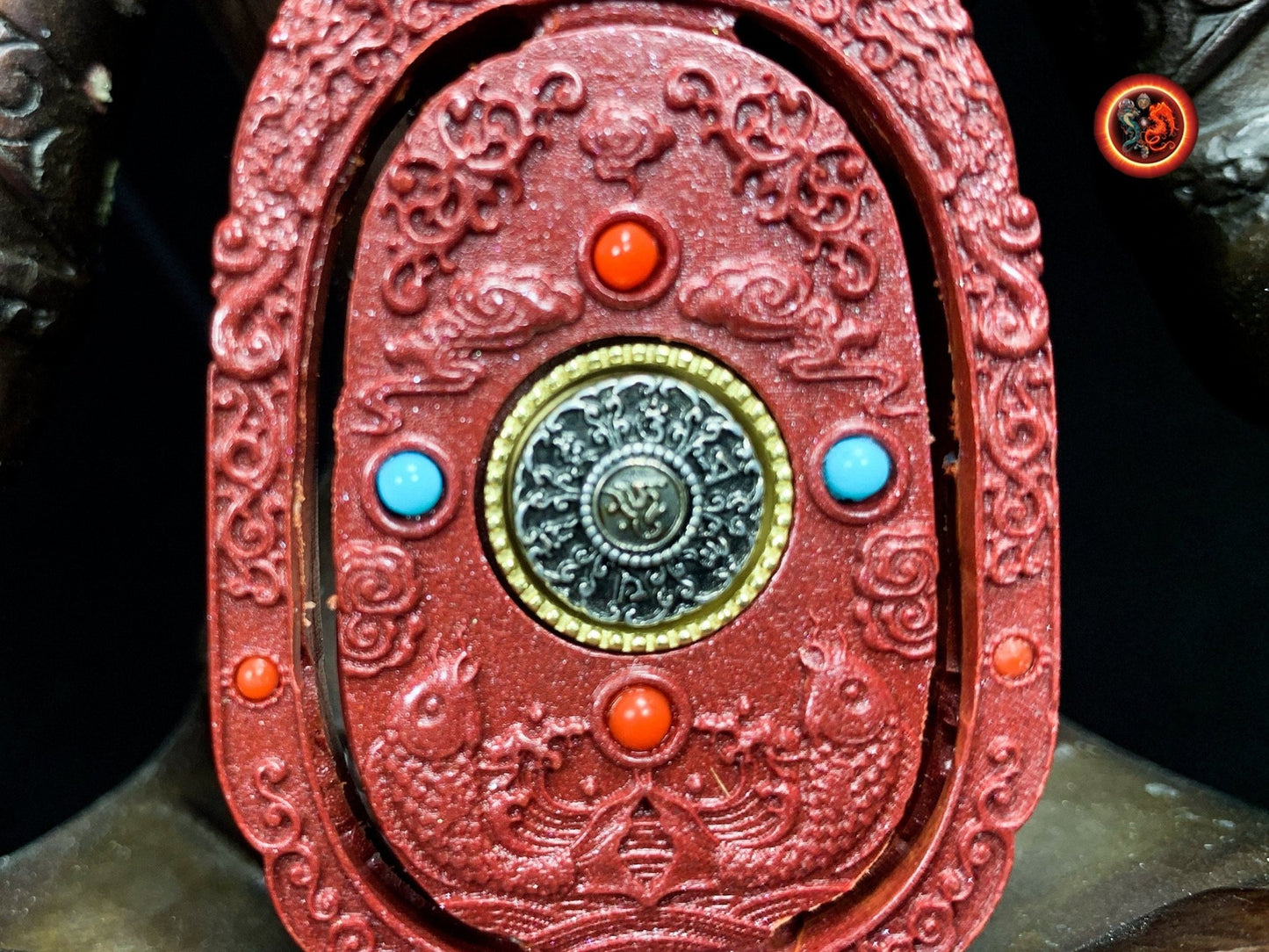
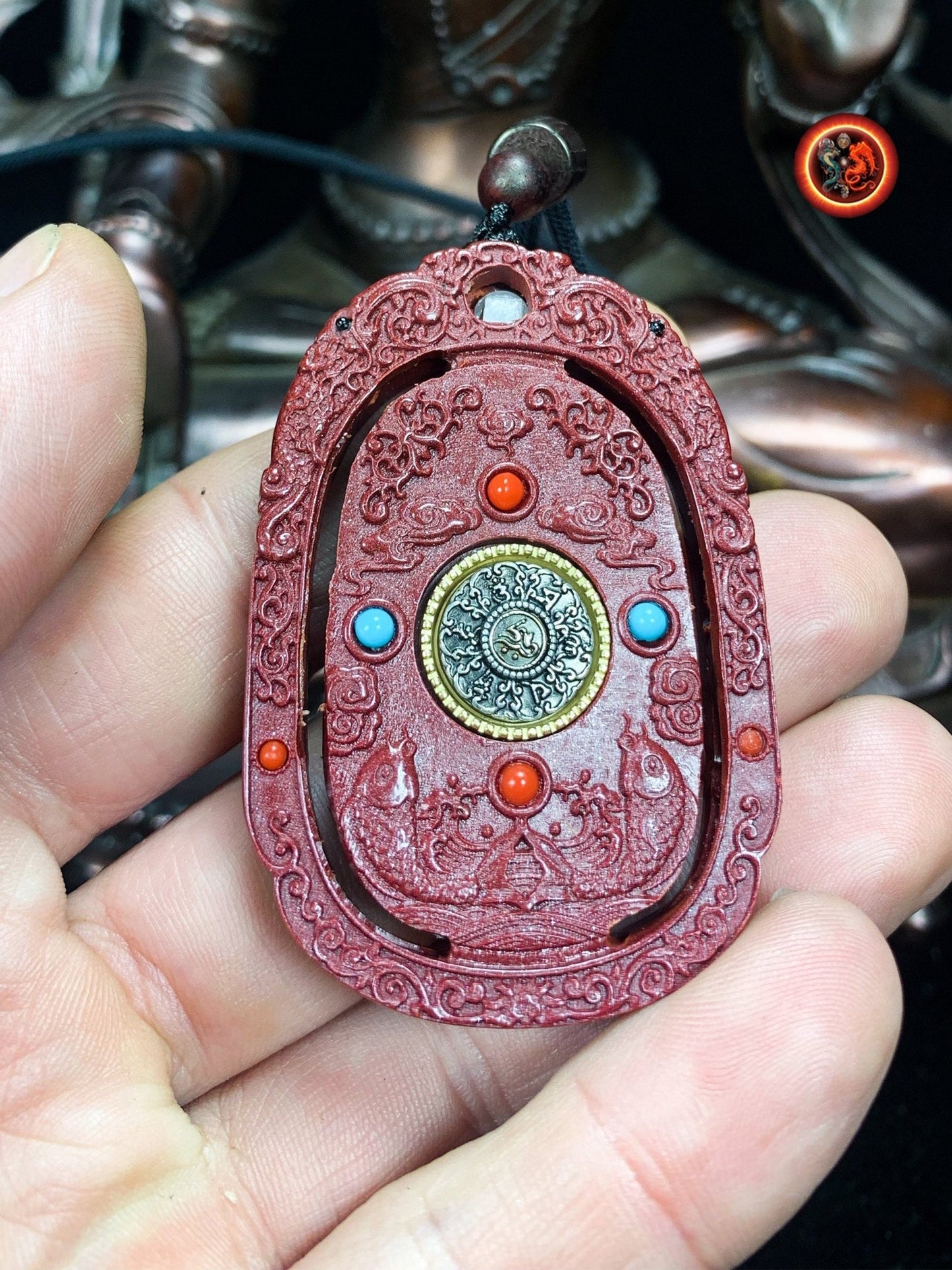
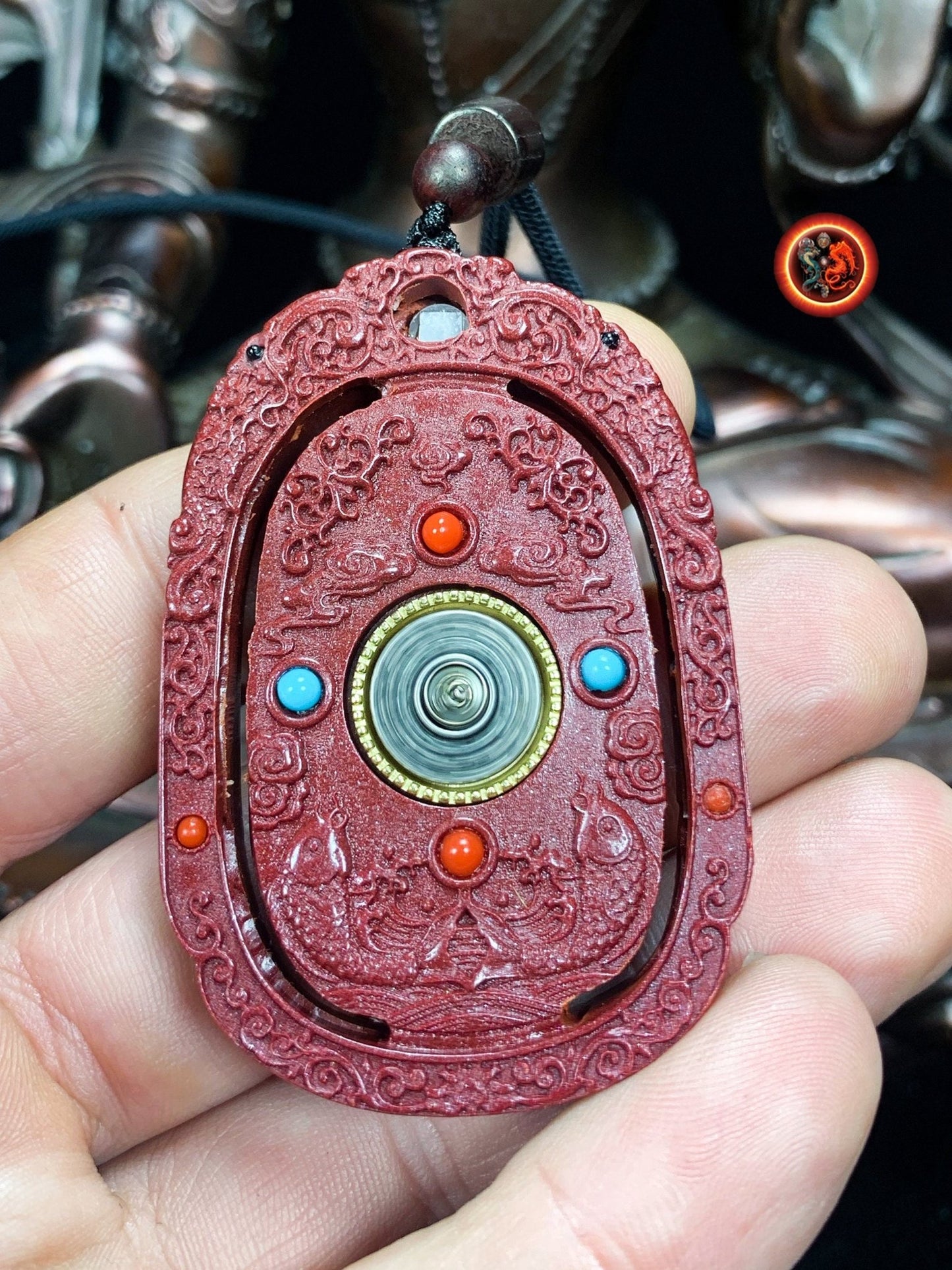


Return conditions for a Zen purchase
We offer you a money back guarantee within 14 days after delivery of your order.
If you are not completely satisfied with your purchase, please contact us to arrange a return of the product and a refund.
Except for returns, shipping is free on all orders.
Multi-column
Button text-

100% secure payment
3 times interest-free option with Scalapay
-

Free delivery in France and internationally
14 days money back guarantee after delivery (see our conditions of sale)
-

Column
Excellent customer service
Live chat
Whatsapp +33674049312
Let customers speak for us
from 913 reviewsLe crâne reçu correspond bien à celui proposé sur le site.

J'ai eu l'occasion de rencontrer Jérémy sur Paris avant l'achat...très bon contact avec lui ..il sait de quoi il parle...je suis revenu vers lui pour l'achat de cette magnifique statue...elle a été emballee avec beaucoup de soin pour une expédition de chine... vraiment très satisfait de cet achat..merci

Pendentif dragon en obsidienne œil céleste - Symbole spirituel

Le collier est superbe, et ce pendentif magnifique, ses détails! et l'odeur du bois de santal que c'est agréable! Qualité extra! Contact excellent avec Jérémy, merci beaucoup pour votre gentillesse! Quelle qualité, vivement le mala !

L'objet est très joli et malgré que je ne sois pas un spécialiste, je trouve que le crystal est beau. Il n'est pas parfait et cela me rassure sur la qualité du produit qui est sensé être naturel donc imparfait.
Très bien emballé et en plus housse de rangement offerte.
MERCI

Je suis très satisfaite, livraison rapide et soigné. J'ai appréciée la communication avec Jérémy… L'article est superbe, plus jolie que ce que je pensais.

J’ai commandé un crâne de dragon, il est super beau et très puissant. Je l’adore 😍 Et l’envoi a été très rapide 🤗 merci 🙏🏻

Absolument magnifique,il m’appelait ce bracelet et je suis ravie je ne vais plus le quitter merci 🙏🏼😍

Merci pour votre envoi, la pierre est magnifique, merci..

bracelet puissant, je suis content de mon achat

Cet artisan est gémologue, il travaille avec des artisans qui sont des vrais artistes, je suis bluffé par la qualité des ouvrages sur l’argent et sa qualité. Quand à la qualité des pierres pas besoin d’être gémologue pour voir la qualité exceptionnelle des pierres, encore une fois le travail de sculpture est exceptionnel.
Mon mala traditionnel est une pure merveille dans la tradition originelle. Le ghau est une merveille qui me comble.
Bref que dire de plus :). Allez sur son site.
PS : vendeur qui connait son métier et les traditions bouddhistes ce qui est un plus en plus :)

Ce crâne est un Etre de Lumière. Attirant , inspirant , "parlant".
Il est un Ami qui tire mes pensées vers le Haut.
Ses énergies vibrent à des fréquences élevées. Il est puissant dans la douceur.
Un crâne de Dragon m'assite également. Merveilleux !

Très beaux bracelet et très puissants

Magnifique crâne givré de l'Himalaya.

cette chevalière est tres bien réalisé, avec beaucoup de détails, je suis heureux de l'avoir

